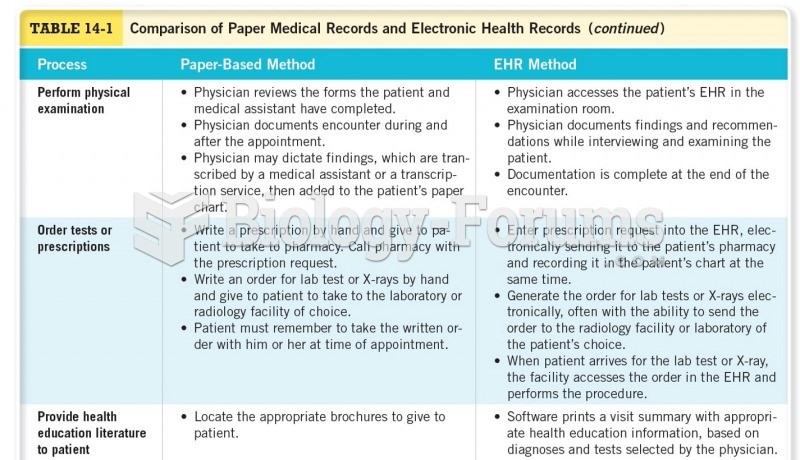|
|
|
Vaccines prevent between 2.5 and 4 million deaths every year.
Everyone has one nostril that is larger than the other.
The Food and Drug Administration has approved Risperdal, an adult antipsychotic drug, for the symptomatic treatment of irritability in children and adolescents with autism. The approval is the first for the use of a drug to treat behaviors associated with autism in children. These behaviors are included under the general heading of irritability and include aggression, deliberate self-injury, and temper tantrums.
Egg cells are about the size of a grain of sand. They are formed inside of a female's ovaries before she is even born.
Your chance of developing a kidney stone is 1 in 10. In recent years, approximately 3.7 million people in the United States were diagnosed with a kidney disease.







